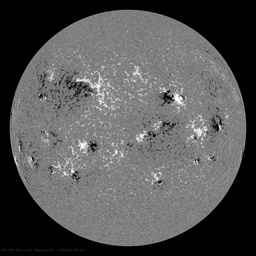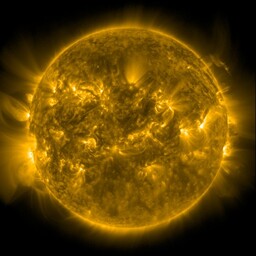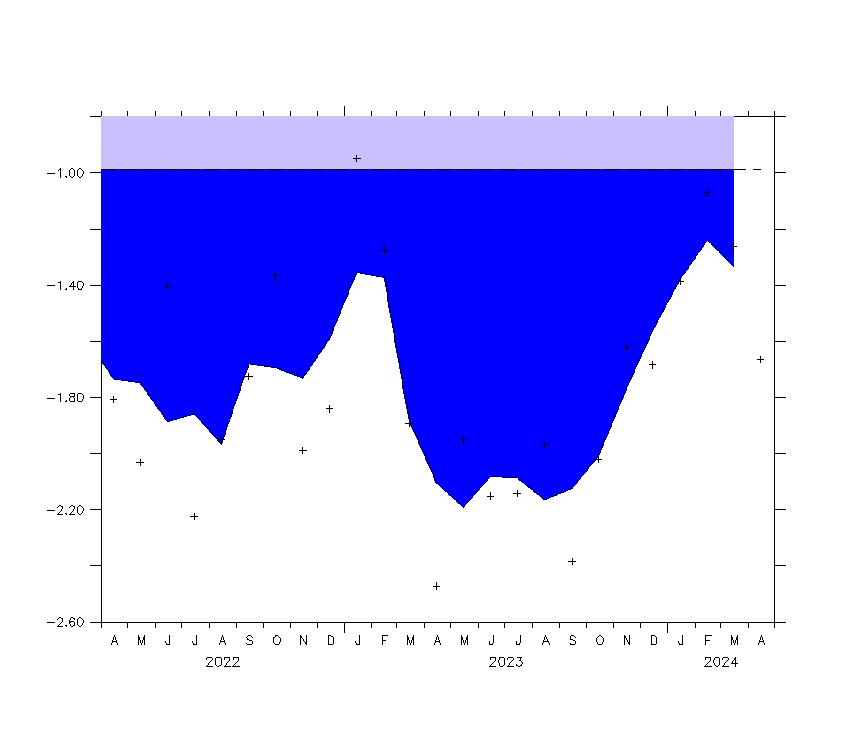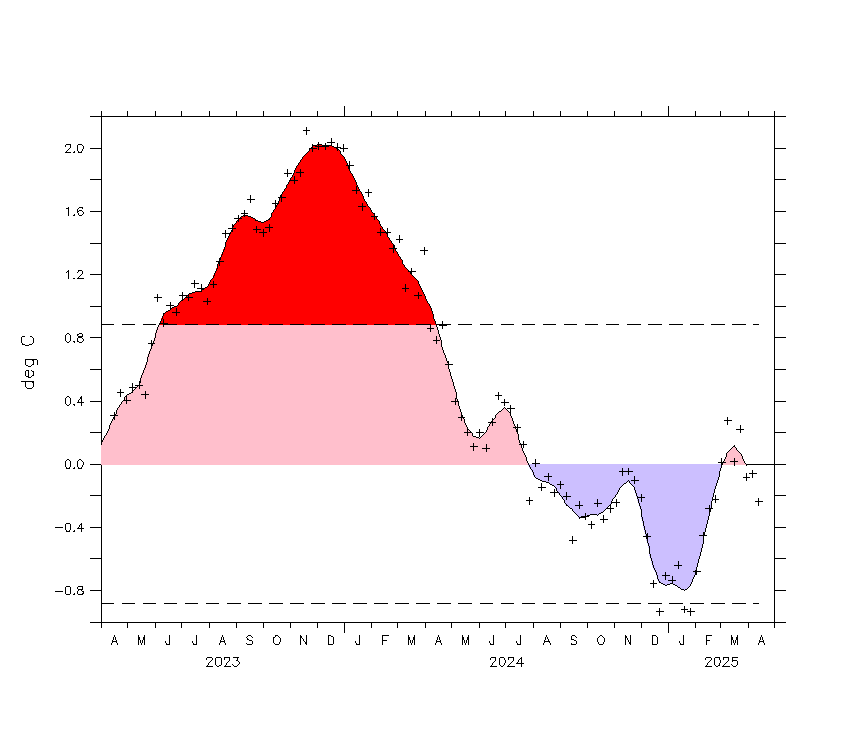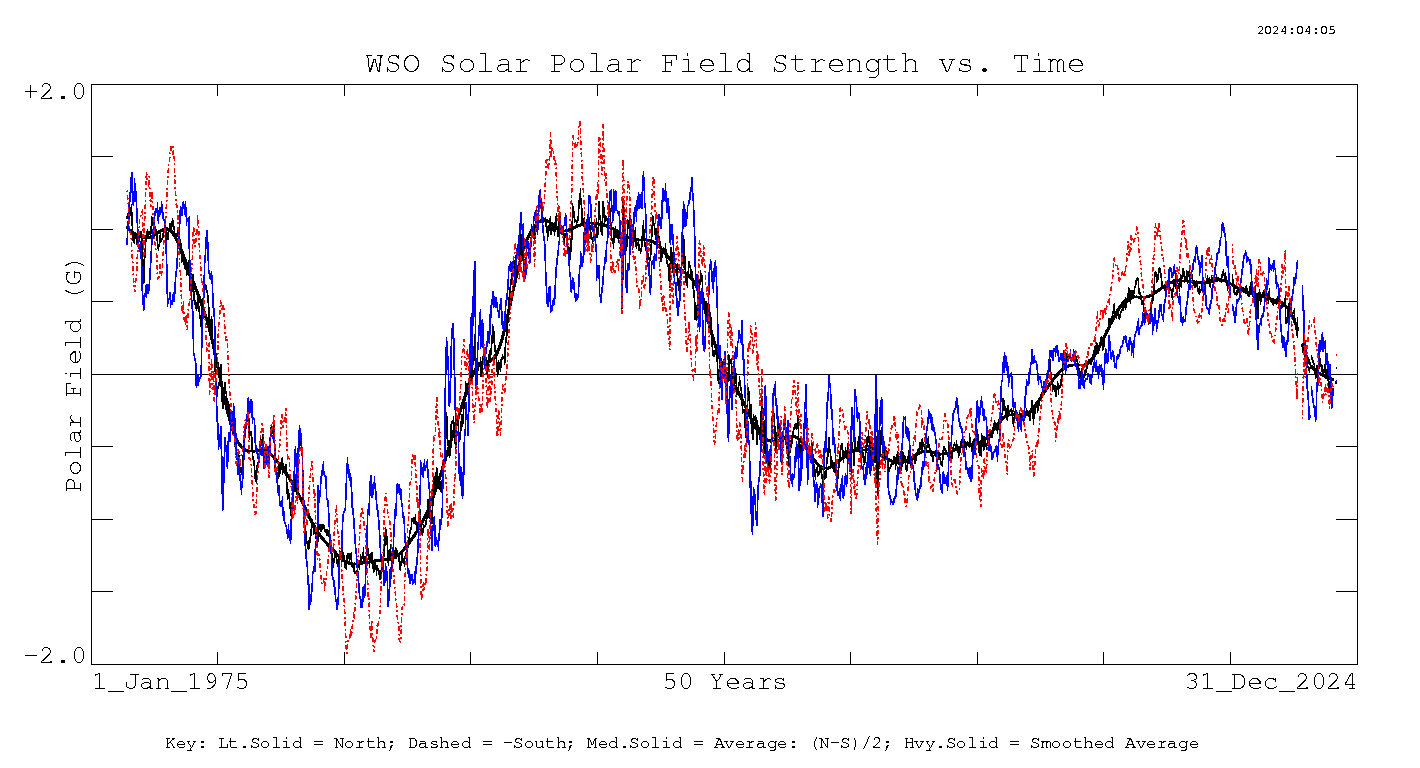
Fig.1. Click on the graphs for a full size view. Only one strong Disruptive Force this cycle ensuring a weak Dalton type event.
Understanding the Powerwave action that controls solar output in respect to Angular Momentum Theory (AMT) is a fundamental requirement that perhaps very few have a basic insight. This article will attempt to explain the theory in segments which will hopefully spread some insight into this fascinating real world observation.
AMT begins with the orbital path of the Sun. The Sun does not remain stationary in the centre of the solar system, but instead orbits a point or gravitational centre of the solar system (SSB). The gravity of the outer 4 planets determines the daily position of the Sun which follows a kaleidoscope pattern orbit around the SSB. The orbit shape is basically an inner loop followed by and outer loop and is primarily controlled by Jupiter and Saturn.
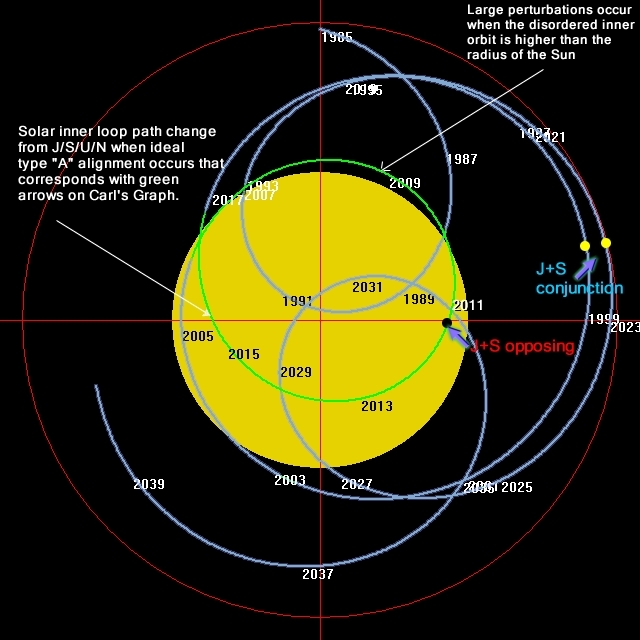
Fig. 2 The green/purple line denotes the centre of the Sun on its path around the SSB (red crosshairs)
At its greatest point the Sun can have its centre 1.6 million kilometers from the SSB and also experiences a 100% velocity change compared to the inner loop that generally returns to the SSB, the two loops each follow a rough 10 year timeline which DO NOT line up with solar cycles. Solar Angular Momentum is calculated from these movements and can be seen in Carl's famous graph.
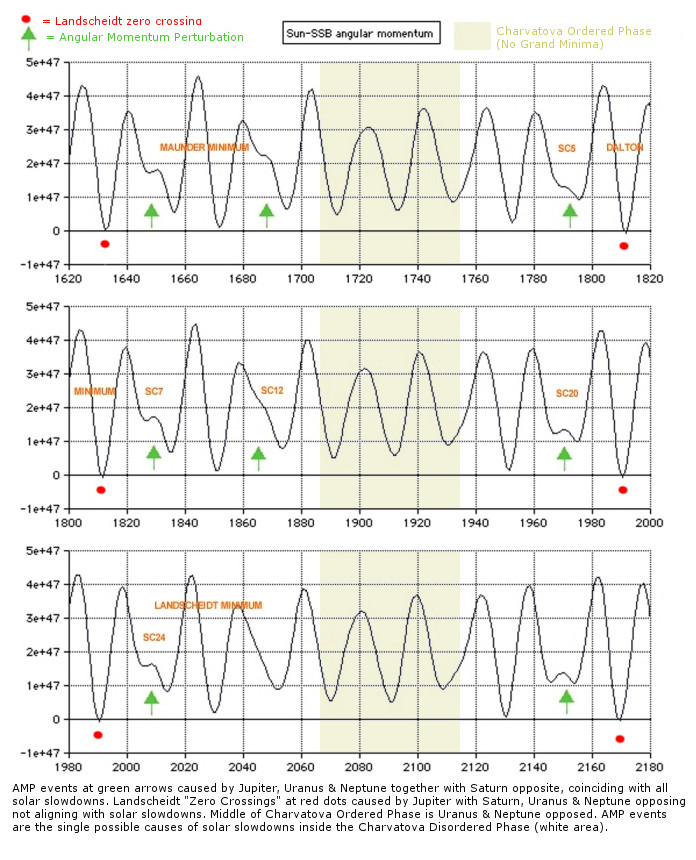
Fig. 3. Carl's Graph derived from JPL data.
AMT has two cornerstone forces.
1. The Modulating Force.
2. The Disruptive Force
Fig.1 shows a pink powerwave that modulates the height of solar cycles and is the Modulating Force. This wave follows the general trend of solar activity which correlates with the solar Angular Momentum (AM) wave, the top of the wave is always at the conjunction of Uranus & Neptune. This wave has been described many times in science and is sometimes called the Gleissberg cycle, the AM wave is powered by Jupiter and Saturn but is modulated by Uranus and Neptune as they return to conjunction every 172 years (this function also recently observed by Scafetta). While observing the modulating wave it is important to understand the integration of the Disruptive Force which can easily knock out the high solar cycles at the peak of the wave.
The Disruptive Force is the only variable in solar output (other than the smaller Modulating Force) and ultimately is what controls the shape of the Holocene solar record. The Disruptive Force comes from two particular planetary positions that occurs in groups near the top of the AM modulating wave. The Main Disrupting Force is experienced when the outer 4 planets are in the position shown in Fig 4.
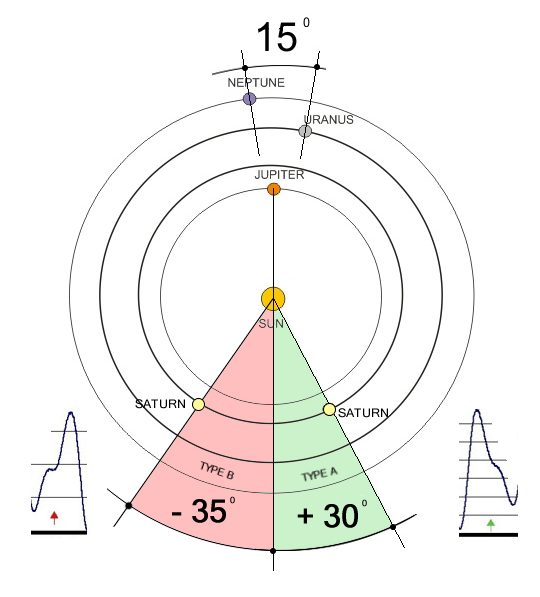
Fig. 4. Type "A" at 30 deg. being amongst the strongest perturbations and grand minima of the Holocene.
Uranus and Neptune when near conjunction alter the normal pattern of Angular Momentum because of their combined gravity as seen at the green arrows on Fig.3. At the same time the normal path of the Sun is altered as seen by the purple curve on Fig.2. Charvàtovà and others have noticed that solar grand minima occur during times of the altered path of the Sun but now we can understand how to quantify the solar downturn that occurs during the altered path. The altered path of solar cycle 20 is not that different to the current cycle but the results should be very different. There is also another altered path (Type "B") that is generally weaker but just as important and not observed by Charvàtovà. The Disruptive Force or Angular Momentum Perturbations (AMP) occur in groups separated by roughly 40 years either side of the height of the Uranus/Neptune modulating wave. Most common is three groups per 172 year cycle (avg) but can be as few as two and as many as five. By understanding the strength of each disrupting or AMP event we can determine the amount of solar downturn for the era, this is done by observing the perturbation shape on Fig. 3 at the green arrows and by also observing the 4 outer planet angles in relation to each other as seen in Fig.4. and Fig. 5.
Some may ask why does the Disruptive Force have so many different strengths and occurrences during the height of each 172 year wave. Jose back in 1965 made the mistake of declaring the outer 4 planets return to the same position every 178.8 years. This simply does not happen and can easily be verified by using any online solar system viewer and going back in steps of 179 years. The orbital mechanics of the outer 4 planets move very slowly over thousands of years whereby the positions evolve and never return to the same position (but come close every 4627 years or 27 x 172 yr cycles). This evolution of the outer 4 planet positions is what shapes the Holocene solar record seen in Fig 5.
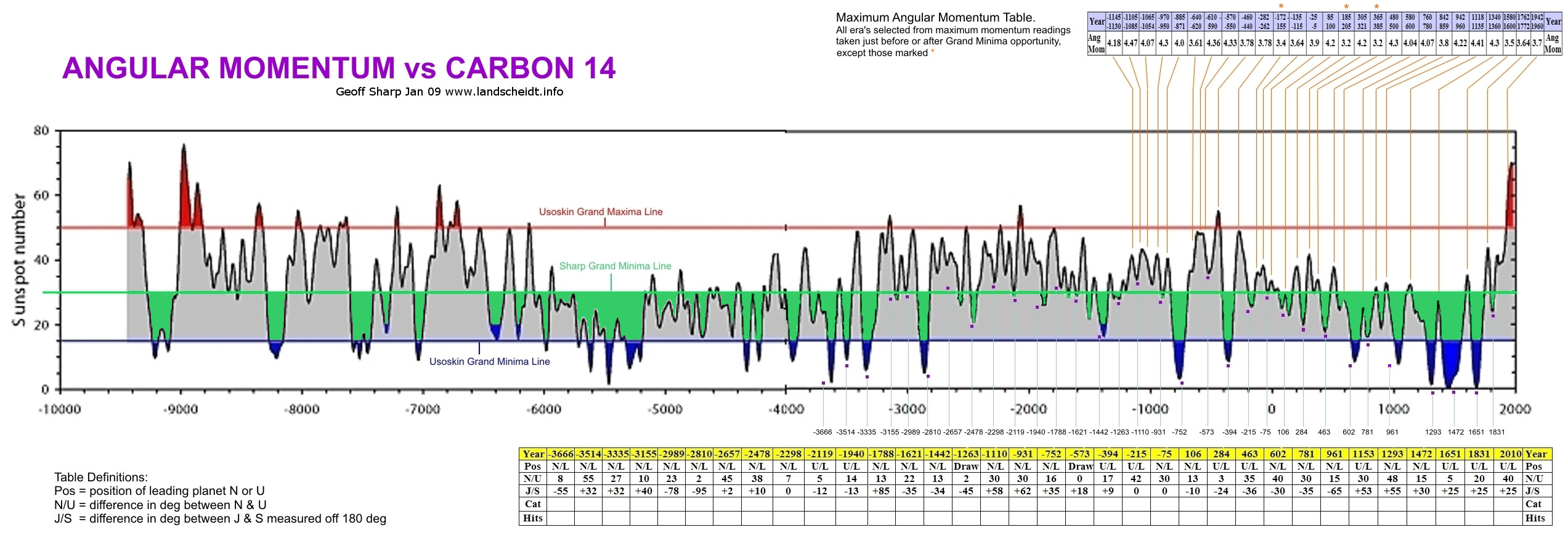
Fig. 5
When looking at solar output over greater timeframes another powerwave is observed. This wave is the Holocene record itself which is determined by the strength of the Disruptive Force over the 11,500 year record. Strong alignments of the outer 4 planets coincide with deep grand minima, while weaker alignments agree with the Medieval, Roman and Minoan Warm Periods. This is also observed in Fig. 6 when comparing the quantified AMP events with the Holocene isotope record.
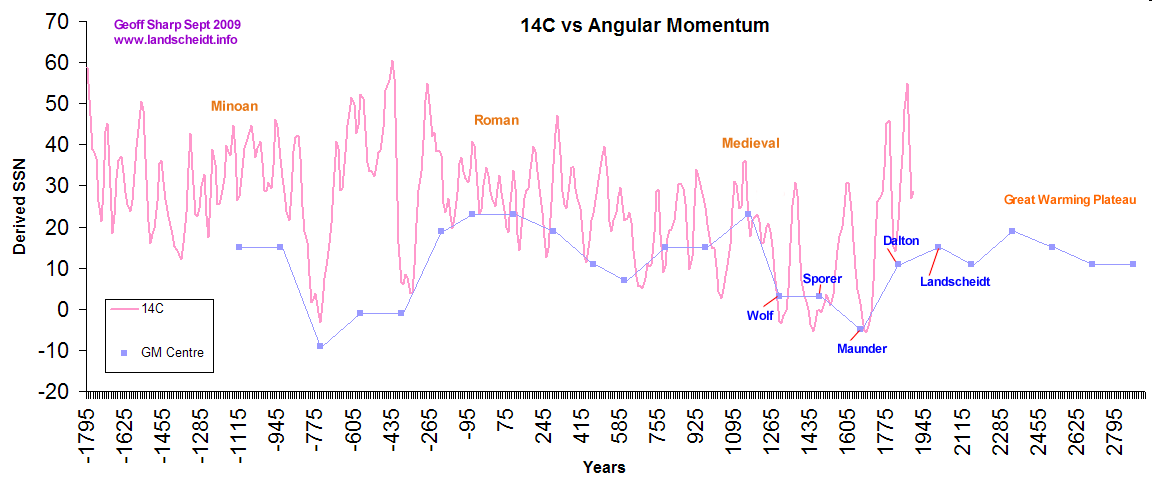
Fig. 6 Figures 5 & 6 plotted from original Solanki (INTCAL98) carbon 14 data
AMT does not include what determines the length of the solar cycle and there are times when the Disruptive Force is weakened because of timing. If the AMP event happens near cycle max the full effect is not realized. It is thought that the Disruptive Force causes a "phase catastrophe" in the Hale cycle whereby one solar pole does not reverse polarity which then takes another full cycle before recovering. If the timing is wrong this will not occur, 1830 is a good example in the modern record.
Understanding the mechanics of both forces makes it relatively easy to understand the rest of Angular Momentum Theory and the power of the Angular Momentum wave, it should also be obvious that because of the inconsistancies in the wave, a firm recurring pattern of grand minima is not possible. There is now a peer reviewed paper by Wolff and Patrone that provides a mechanism for planetary control of solar output. If there are any questions on quantifying the Disruptive Force or any other area I am most happy to respond in comments.
A full version containing more information is available in my paper HERE.
Geoff Sharp.


